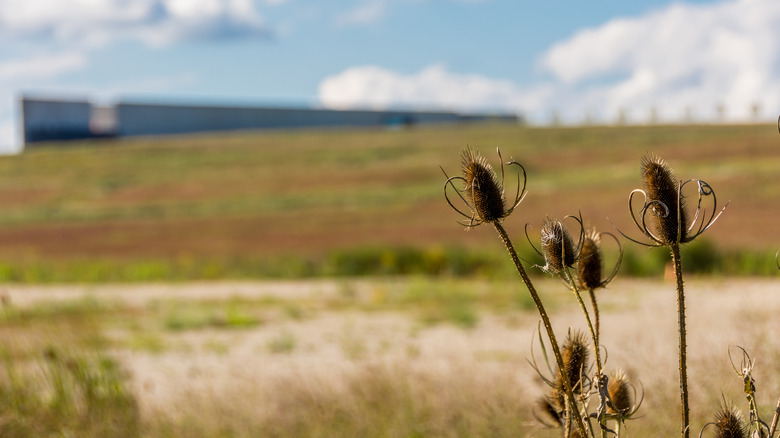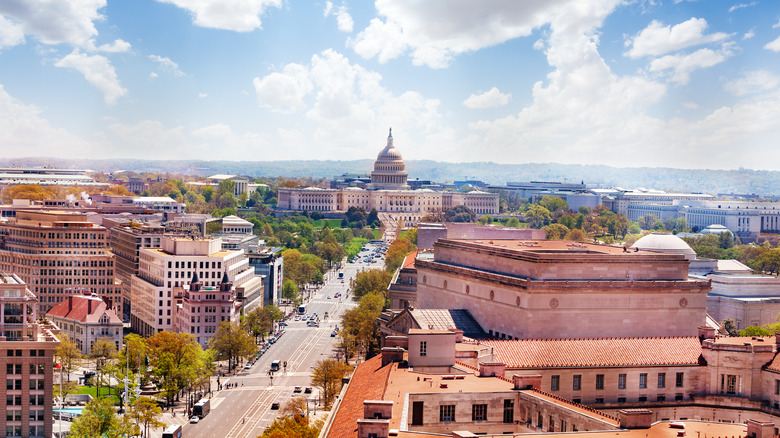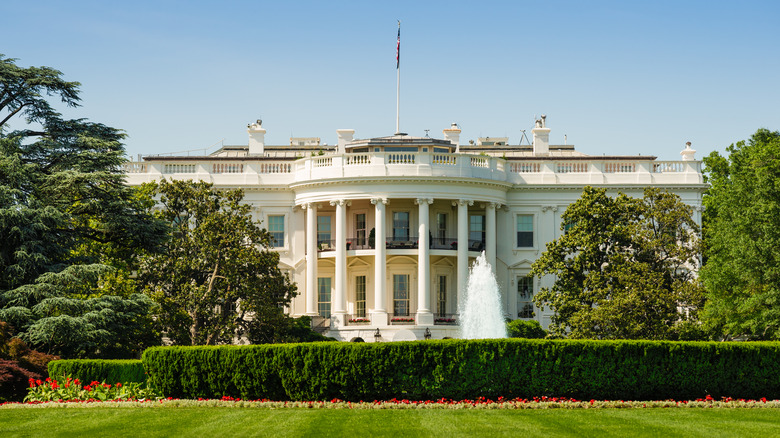Flight 93's Intended Target Isn't Known For Sure, But These Are The Theories
When reports first emerged on September 11, 2001, that a commercial jet had hit the North Tower of the World Trade Center in New York, those who first saw the images of the smoke billowing from the iconic building may well have assumed that the incident was a tragic accident. But by the time the FBI received news that Flight 93 had made an abrupt turn and been diverted from its expected flight path that morning, the reality of what was occurring that day was beginning to dawn on intelligence services, the media, and ordinary people across America: a terrorist attack on multiple targets, with further planes striking the second World Trade Center tower and the Pentagon in Arlington, Virginia. As rolling news continued to report developments — and as the horrifying sight of the collapse of the Twin Towers was broadcast around the world — the human cost of the deadly coordinated attack became clear. The death toll would eventually reach a total of 2,977, according to the 9/11 Memorial and Museum.
Of those killed, 441 were first responders, many of whom fought to save people in the towers while they fell. Their bravery and sacrifice have become a thing of legend, memorialized in documentaries, books, and films. So too have the actions of the passengers of United Airlines Flight 93, a fourth hijacked commercial plane that crashlanded after those on board turned on the hijackers. It is believed that the plane was headed to Washington, though experts are split on what the terrorists' precise target was.
United Airlines Flight 93 was diverted toward Washington
United Airlines Flight 93 left Newark, New Jersey just before 9 a.m. on September 11, 2001, bound for San Francisco, California. But like three other passenger aircraft that day, there were terrorists on board bent on ensuring that the plane would not reach its destination.
The hijackers, members of the radical Afghanistan-based terror group Al Qaeda, told the crew that they had a bomb on board. After the captain had informed the passengers of the hijacking and advised them to stay in their seats, the terrorists took control of the plane and turned it toward Washington D.C., where they intended to fly into a prominent building just as their murderous co-conspirators had done earlier that day.
But a number of Americans who found themselves at the mercy of the hijackers had other ideas. In a coordinated effort — the planning of which has been immortalized through a famous recording — several of those on board rushed the hijackers, forcing them to crashland the plane into a field in Somerset, Pennsylvania, killing all 33 passengers and seven crew members on board.
Where in Washington was Flight 93 headed?
The Pentagon in Arlington, Virginia is the control center of the United States military, housing some of the nation's most important defense departments; in targetting the complex, the 9/11 hijackers were effectively launching a direct attack on American security personnel.
Meanwhile, the Twin Towers were largely symbolic in their intention: though non-military targets, they were iconic buildings that towered over New York, and which upon completion were the tallest buildings in the world. By striking the towers, Al Qaeda struck at a potent emblem of the globalized and affluent West.
The passenger plane that crashlanded in Somerset County, Pennsylvania 240 miles from Washington D.C. is assumed to have been intended for a specific target in the city. As the nation's capital, there are a number of potential locations that the hijackers of United Airlines Flight 93 may have had in mind as the ultimate target of their attack. The headquarters of the CIA, the Capitol building, and the White House have all been identified as possible targets for the attack — security expert Tyler Drumhiller has a hunch that the hijackers were aiming for the latter, per NBC News — but more than two decades on from the attacks nothing has been confirmed.


